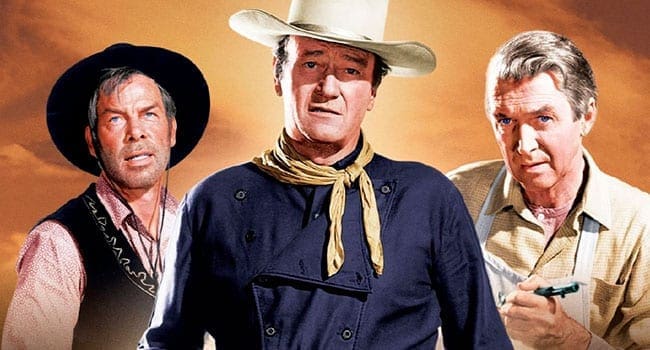 John Ford was an Irish-American film director whose active career began in the silent era and extended into the 1960s. Along the way, he picked up four Academy Awards for best director.
John Ford was an Irish-American film director whose active career began in the silent era and extended into the 1960s. Along the way, he picked up four Academy Awards for best director.
Immense talent notwithstanding, Ford had a dark side. He was, to put it mildly, a bully. You might call him a tyrant.
Belittling actors on set was part of his modus operandi. Even John Wayne – the epitome of the mid-20th-century alpha male – was a target. And Wayne, whose reverence for Ford knew no bounds, mostly hung his head and turned the other cheek.
None of Ford’s Academy Awards came for westerns but much of his most durable work belongs to that genre. My favourite is 1962’s The Man Who Shot Liberty Valance.
The film is based on a 1953 short story of the same name by Dorothy M. Johnson. Reputedly, Ford bought the screen rights for $7,500.
Johnson was an anomaly, a woman writing in a field historically dominated by men like Zane Grey, Luke Short and Louis L’Amour. Still, Johnson was very good at what she did, so much so that two other efforts – A Man Called Horse and The Hanging Tree – also made it to the movies. And another short story, Lost Sister, won the Western Writers of America’s highest award in 1957.
The Man Who Shot Liberty Valance was filmed in black and white, which made it a bit of an anachronism at the time.
Scott Eyman – biographer of both Wayne and Ford – holds that this was a choice Ford insisted on. Apparently, he believed black and white was “real photography.”
Others have suggested studio economics played a part in the decision. In addition, colour would’ve revealed that Wayne and co-star James Stewart were really too old for their roles.
And there were none of the stunning Monument Valley vistas that had formed the backdrop for many Ford westerns. Instead, the film was shot on the studio lot, thus enhancing a sense of character-driven intimacy. One reviewer, however, found it claustrophobic.
The story unfolds in flashback, told through the recollection of the Stewart character who, along with his wife, is back in a small western town to attend the Wayne character’s funeral. Talking to reporters, he disavows a myth that’s been highly beneficial to his political career.
For years, he’s been famous as the man who killed the notorious outlaw Liberty Valance, thus rescuing the cowed citizens of the town from Valance’s malevolent grip. It’s a reputation that’s taken him to the governor’s mansion, the U.S. Senate and beyond.
Except he didn’t do the deed.
A lawyer by training and devoid of any skill with firearms, the Stewart character was brave enough to stand up to Valance. But it was Wayne’s self-reliant character who actually dispatched the villain, saving the Stewart character’s life in the process. Then recognizing that their mutual romantic interest preferred the Stewart character, the Wayne character stepped back and allowed him to take the credit.
Subsequently, their life trajectories became polar opposites. Stewart’s character got the girl and went on to enjoy a glittering career. Wayne’s character faded into the background and died destitute.
However, in the film’s memorable summing up, the Stewart character’s relating of the truth fails to impress the reporters to whom he unburdens himself. They won’t print the story. As one puts it, “This is the West, sir. When the legend becomes fact, print the legend.”
The Man Who Shot Liberty Valance has aged well. Critics were a bit mixed at its initial release and American box office returns were a tad below the norm for a Wayne vehicle. Now, though, it’s seen as a classic.
Apart from pure entertainment value and the high quality of the performances, a couple of themes have drawn attention.
The film’s story arc is said to denote the transformation of the Old West. Stewart’s ascendance represents the march of ordered civilization, whereas Wayne’s descent signifies the obsolescence of rugged individualism. I’m not sure I buy that.
There’s also the matter of myths. Where Ford was previously happy to nurture the mythology of the Old West by sanitizing historically ambiguous men like Wyatt Earp, The Man Who Shot Liberty Valance takes a more nuanced outlook. Heroes aren’t necessarily who you think they are.
If you’ve never seen this movie, hunt it down and give yourself a treat.
Troy Media columnist Pat Murphy casts a history buff’s eye at the goings-on in our world. Never cynical – well perhaps a little bit.
The views, opinions and positions expressed by columnists and contributors are the author’s alone. They do not inherently or expressly reflect the views, opinions and/or positions of our publication.

